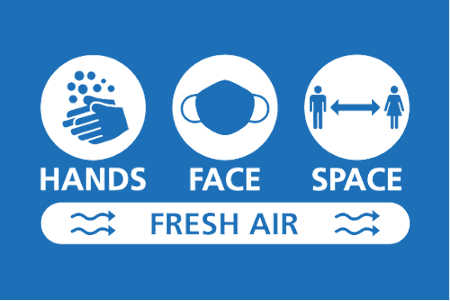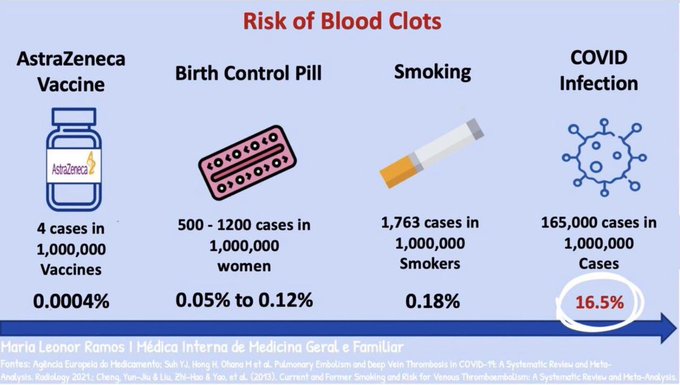Opening up meetings after lockdown
Angus Soutar
"Be well-acquainted with the problem before you act." This is an important principle in permaculture when we are dealing with pests and diseases. Research gathered over the past year comes into practice as we prepare for "opening up" our courses after a long precautionary break. There is still plenty to reflect upon and to talk about, but we now know enough to assess risks properly and move forward.
Our assessment is that things are not likely to be "normal" any time soon unless the great majority of people "play safe" during the coming months. But we can get back to work, as long as we take all the steps to prevent further spreading of the virus.
What we know
In spite of much resistance from policy makers and journalists, there is now general agreement that the primary route for catching the virus is through breathing infected air. The disease is fully airborne. The Lancet has published "ten streams of evidence collectively supporting the hypothesis that SARS-CoV-2 is transmitted primarily by the airborne route".
As we reported earlier last year, the now ubiquitous plastic screens provide some protection against heavier saliva droplets but they are absolutely useless in preventing the virus being carried through indoor spaces by air currents. The virus can "hang in the air like smoke".
Face masks work, both to prevent us from spreading lots of virus around if we are infected and also to protect us from inhaling debilitating doses of virus.
 |
| Hands Face Space REPLACE the air |
| Public Health England catches up |
 |
On the other hand, the evidence that we can catch the disease from surfaces by touching them, and then touching our faces, has yet to be proven. The research work from March last year was based on finding traces of SARS-CoV-2 on surfaces (fomites), but it could not determine whether the virus was "live" or not. As long ago as July 2020, this initial research was challenged and news that the risk had been exaggerated was published in journals such as The Lancet. This has been backed up recently by the British Medical Journal saying "the transmission of SARS-CoV-2 after touching surfaces is now considered to be relatively minimal."
We may be fortunate that the virus cannot remain viable for long outside our bodies. This is another area where the SARS-2 virus is different to normal winter flu. (It is interesting to see that current precautions of distancing and hand washing appear to have suppressed the usual winter flu outbreak this year. There are no reports of people dying in their thousands as is normally the case.)
Good hygiene remains important, as a general precaution. Hand washing with plain, honest soap is as good as anything. The "security theatre" of biocidal hand sanitation and obsessive surface cleaning may be good at reminding people that there is an unseen risk "out there", but many of the efforts that people are taking to to beat SARS-CoV-2 seem to be completely mus-directed.
As we said in an earlier issue, there is a steadily increasing amount of research saying that a healthy immune system, good nutrition and plenty of sleep form the front line of defence against becoming sick with this virus.
Vaccination has arrived as another way to suppress the outbreak. The main hope with the vaccination programme is that it will reduce the horrific load on our hospital system. Rather than stand outside banging saucepans, we can now go and get vaccinated. Many of us at the Northern School have already done so. Compared to CoViD itself, vaccination seems to be a safe choice, especially for older people. Most vaccines seem to be very safe compared to other commonly used medications.
 |
| Risk of blood clots |
 |
What we don't know
It will be safer all round if we do not rely on the fact that vaccination will solve the current problems. Relying on vaccination alone is a risky strategy. This is the first time that it has been tried in the face of such a widespread pandemic. We are entering an evolutionary "arms race" with a virus that experiences random and unpredictable variations to its genetic make-up at a speed that is worryingly fast. It's a similar challenge to antibiotic resistance with bacteria.
If the pandemic is still burning up around the world, then certain regions will be a continual source of variants. Some of these viral variations may well evade the current vaccines. As the vaccination programmes limit the spread of the virus, so the virus will tend to infect those who do not have resistance, with unpredictable results.
There is also a period of time after getting our jab where vaccination is challenging our immune systems, and we may be more susceptible to coming down with other infections, including CoViD itself, at this time. It is difficult to find clear data on this, so a few weeks further precaution is advisable.
The biggest uncertainties are around the long-lasting effects of catching CoViD, termed "Long CoViD". Our sense is that this is currently being underestimated and even ignored. So far, research has concentrated on those who have been in hospital with CoViD and the news is not good. Seven out of ten people who survive have still not recovered fully after five months.
Research is also emerging about the general prevalence of long covid, even amongst people who initially report no symptoms after infection. This worrying picture is now one of the main reasons for making efforts to avoid spreading the virus in the first place.
Classroom Design
Outdoors: the good news is that it is safest to spend as much time outdoors as possible. Unlike other institutions, we have plenty of experience of running sessions outdoors (and sometimes off-grid and away from mobile phone signals as well.) This should bring in a refreshing change to our activities (weather permitting).
Indoors: it is clear that we must focus on ventilation. Considerations include:
- size of room
- maximum number of people within
- the volume of air flowing through the room
- the speed of the flow through
other risk factors are:
- the length of time people spend in the room
- the infectivity of any "spreaders" present
- the virus expulsion rate (higher if shouting, singing or exercising)
With the permaculture approach every room will suggest its particular solution. Careful observation, including techniques like smoke testing, will be done before deciding on safety measures. The aim is to ensure an appropriate rate of air change while the room is occupied.
Since virus particles are exhaled along with a whole lot of carbon dioxide (CO2) from people's lungs, we can use the levels of CO2 in the air of the room as a "proxy" safety measurement. The higher the CO2 levels, the more chance that you will be breathing in the air someone else has just breathed out. As any good climate activist knows, outdoor CO2 levels are around 400 parts per million (ppm). The German authorities have imposed a 700 ppm limit in school classrooms. The risk of infection is expected to increase rapidly over 1000 ppm. Rooms may not feel "stuffy" until the level has reached several thousands of ppm and it is only at 5000 ppm that people will feel ill-effects.
More information is available in this paper from the UK government's scientific advisory group.
It may well be that we end up being over-cautious. Time may be spent preparing for something that isn't there, but we may well see the benefits when the next pandemic arises. The best time to have been prepared was before the current pandemic started. The second-best time is now.